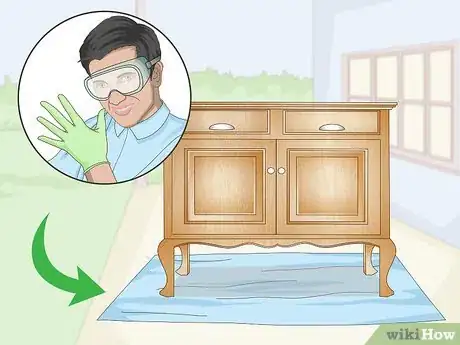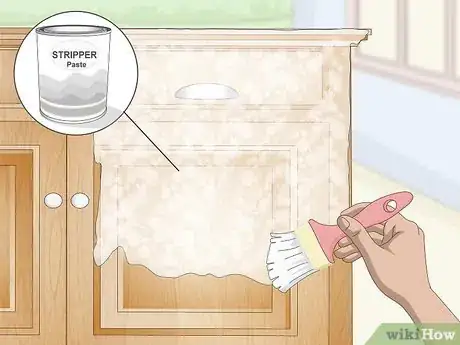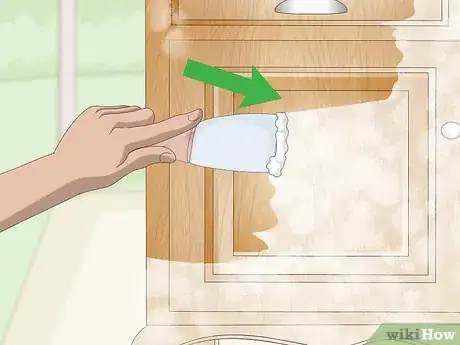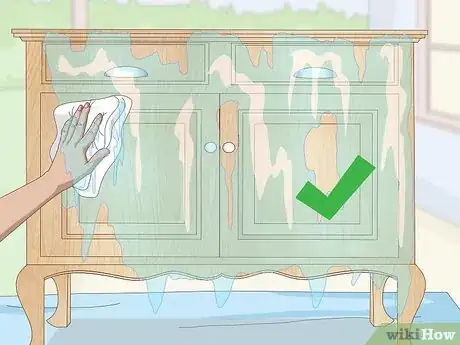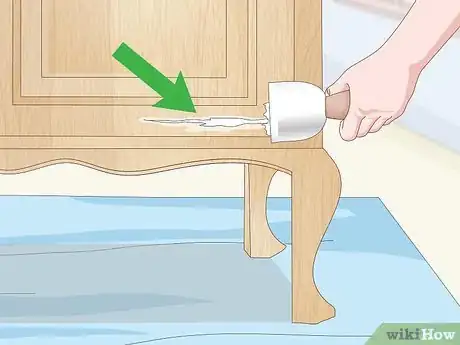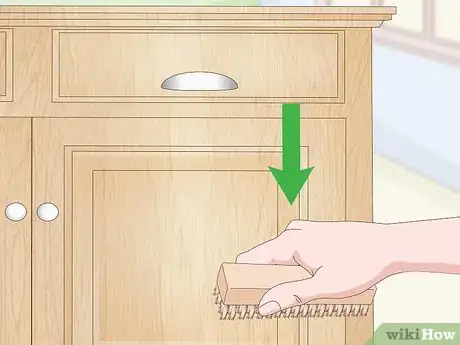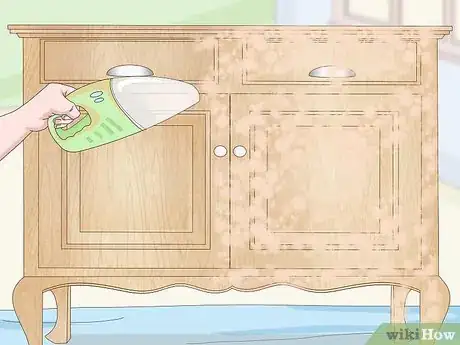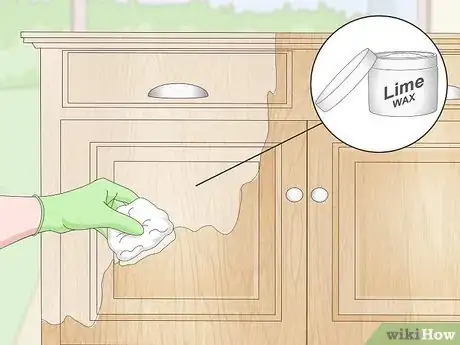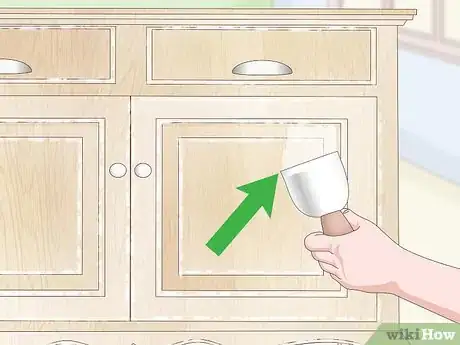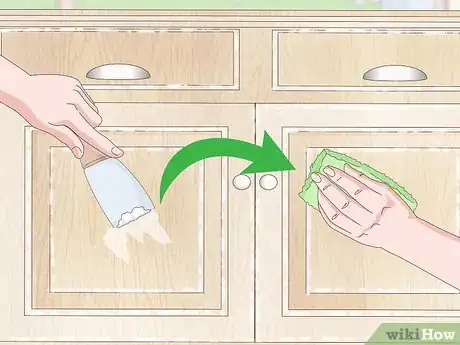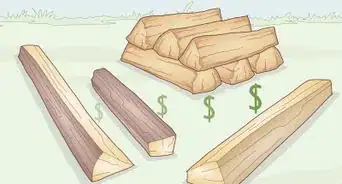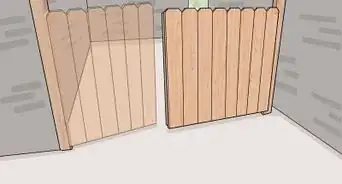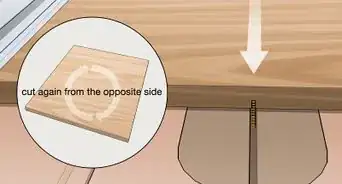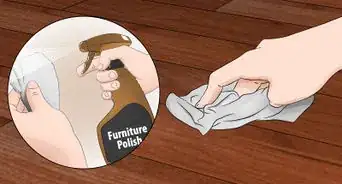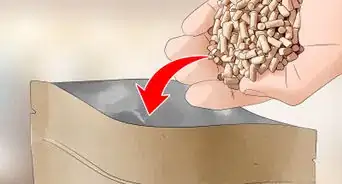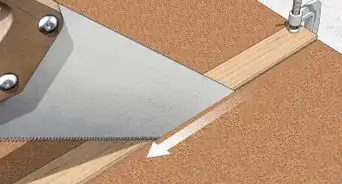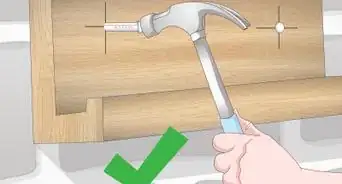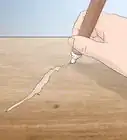This article was co-authored by wikiHow Staff. Our trained team of editors and researchers validate articles for accuracy and comprehensiveness. wikiHow's Content Management Team carefully monitors the work from our editorial staff to ensure that each article is backed by trusted research and meets our high quality standards.
There are 8 references cited in this article, which can be found at the bottom of the page.
This article has been viewed 31,604 times.
Learn more...
Applying a lime finish to your oak furniture can create a beautiful effect by enhancing the grain of the wood. Use furniture stripper to remove any lacquer or varnish from the wood. Repair any holes in the wood and sand the surface. Buy liming wax at your local hardware store and apply it with a cloth or putty knife, depending on how pronounced you want the grain pattern to be. Clean off excess wax and admire the beautiful lime finish on your oak!
Steps
Removing Lacquer or Varnish from the Wood
-
1Cover the floor and protect your eyes and hands. Lay down newspaper or a drop cloth on the floor underneath the oak piece you will be working on. Put on protective googles to protect your eyes from the potent chemicals in the furniture stripper. You should also put on gloves to protect your hands.[1]
- If possible, apply the chemical stripper outdoors for proper ventilation. If you do it indoors, open as many doors and windows as possible.
-
2Apply furniture stripper. Use a large paintbrush to apply a paste furniture stripper (available at hardware stores) to the oak piece you are treating. Work from the top, downwards to apply an even coat to the entire surface. For hard to reach spots, try using a small amount of liquid furniture stripper, which is best suited to small or irregularly shaped surfaces.[2]
- If any furniture stripper gets onto your skin, stop working and flush it off immediately with clean water.
Advertisement -
3Let the furniture stripper sit. Follow the manufacturer’s directions for how long to leave the chemical stripper on your oak item. Many furniture stripping products are meant to be left on for 20-30 minutes. Set an alarm to keep track of the time to avoid leaving the product on too long, which could damage the wood.
-
4Remove the paste with a putty knife. Try inserting the knife into the paste. Begin removing it if it is soft enough for your knife to go through to the wood. Remove as much paste as possible.[3]
- Soak a piece of medium-grade steel wool in the chemical stripper and use it to remove any stubborn bits of the paste.
-
5Rinse the wood. Many brands of furniture stripper require that you use water to wash away the chemicals from the wood. Fill a bucket with warm water and use a clean cloth to wipe down the entire surface of the wood item. Allow it to dry for several hours, or overnight.[4]
Conditioning the Wood
-
1Repair any holes in the wood. Before apply a lime finish to your oak, fill in any holes or gaps with wood filler (available at hardware stores). Use a putty knife to fill in holes just above the surface. Let the filler dry, then use a piece of coarse sandpaper to even out the bumps.[5]
-
2Raise the wood grain. To bring out the grain of the wood, use a bronze brush (available at hardware stores) to rub the wood. Be sure to move in the direction of the grain to avoid scratches or marks. Avoid using a steel brush, which may harm the oak.[6]
-
3Vacuum and dust the wood. Use a handheld vacuum to remove sawdust and other debris from the surface of the wood. Clean the floor and surround area as well to ensure that all the fragments are removed. Use a tack cloth to wipe down the surface of the wood after vacuuming.[7]
Applying Lime Finish
-
1Wipe lime wax onto the wood using a cheesecloth. Purchase lime wax at your local hardware store and apply it to your oak wood item with a clean cloth. Wipe in the direction of the grain, pressing firmly and working the wax into it for a textured look. Be sure to cover the entire surface of the wood.[8] </ref>
-
2Push the wax into the grain using a plastic putty knife. For a more pronounced look, use a plastic putty knife to push the lime wax into the grooves of the wood. Press the wax into the grooves, gently scrape the surface (in the direction of the grain) and pull the knife away to smooth the surface.[9]
- Avoid using a metal putty knife, which could damage the surface of the oak.
-
3Clean and buff the surface of the wood. Scrape off excess wax with the putty knife. Use a clean cloth to wipe the surface of the wood in the direction of the grain. The cloth should wipe the wax residue from the surface of the wood but leave it intact in the grains of the wood.[10]
- A gentle scouring pad may help to remove stubborn wax from the wood surface.[11]
References
- ↑ http://www.homedepot.com/c/stripping_furniture_HT_PG_DC
- ↑ http://www.homedepot.com/c/stripping_furniture_HT_PG_DC
- ↑ https://www.lowes.com/n/how-to/refinish-wood-furniture
- ↑ https://www.lowes.com/n/how-to/refinish-wood-furniture
- ↑ https://www.periodliving.co.uk/advice/how-to-lime-wood/
- ↑ https://www.periodliving.co.uk/advice/how-to-lime-wood/
- ↑ https://www.periodliving.co.uk/advice/how-to-lime-wood/
- ↑ https://www.periodliving.co.uk/advice/how-to-lime-wood/
- ↑ http://www.hometalk.com/25640726/creating-a-limed-whitewashed-finish-on-an-oak-shelf-and-more-?expand_all_questions=1
